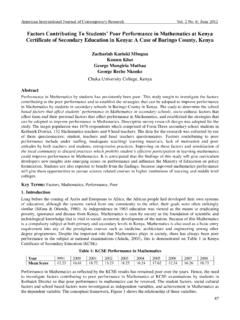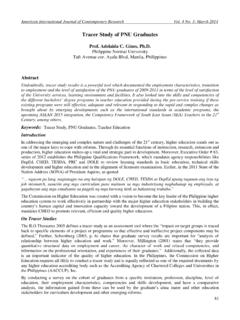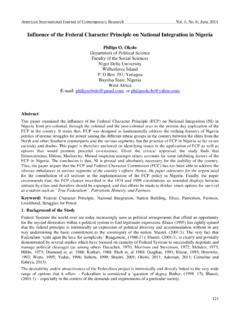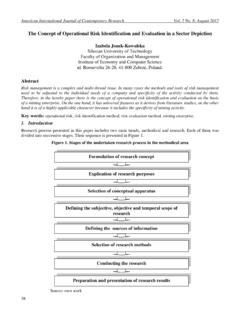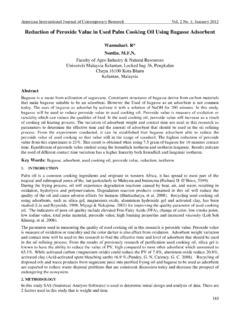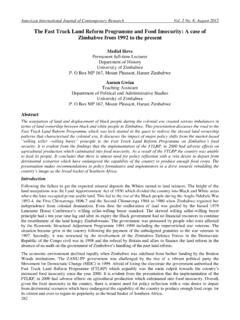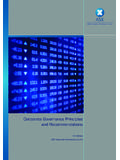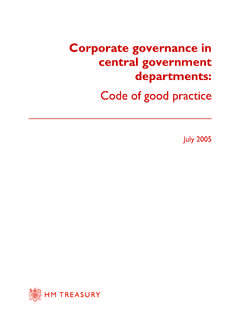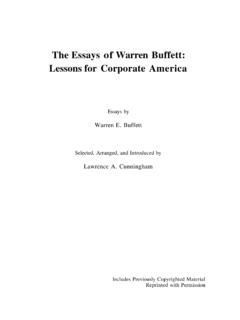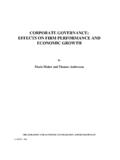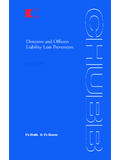Transcription of CLICO’s Collapse: Poor Corporate Governance - …
1 American International Journal of Contemporary Research Vol. 2 No. 2; February 2012 166 CLICO s Collapse: Poor Corporate Governance Wayne Soverall1 Abstract The Corporate collapse on January 30, 2009 of CLICO, the largest conglomerate in Trinidad and Tobago and the Caribbean, is the worst financial shock experienced by the region to date. Today, more than two years later, its devastating effects are still being felt as the government continues to struggle with the bailout to stabilize the financial system, mitigate contagion risk, and resolve the CLICO crisis. Even one year after the bailout, there was still no resolution of the crisis.
2 In view of the intractable nature of the CLICO collapse, the People s Partnership government that came to power on May 24, 2010 established a commission of enquiry to investigate the causes of CLICO s collapse, the scope of the MOU, the cost of the bailout, and the failure to provide a bailout to the Hindu Credit Union (HCU) that collapsed in 2008. There are many questions that are still unanswered. What were the root causes of CLICO s collapse? What Corporate Governance structures and practices precipitated the collapse? Did the bailout create moral hazard? Who or what was to blame for the collapse? What action has the government taken to date?
3 What lessons have been learnt and, more importantly, how can this situation be prevented from being repeated in the future? This concept paper examines these questions, analyzes the evidence to find answers, and in the conclusion, suggests ways to improve Corporate Governance and the empowerment of regulators to provide competent regulatory oversight and enforcement. Key words: financial collapse, bailout, Corporate Governance , moral hazard, political influence, risk management Introduction The devastating effects of the Corporate collapse of Colonial Life Insurance Company (Trinidad) Limited (CLICO) on January 30, 2009 are still being felt today throughout the economies of Trinidad and Tobago and the wider Caribbean.
4 Thus, after 15 years of positive economic growth, the Trinidad and Tobago economy declined in 2009 ( ), as a result of the impact of the global crisis, and more particularly, the collapse of CLICO because of its sheer size, the scope of its operations, and the systemic risk posed to the financial system. At issue, however, was not only the containment of the risk exposure of the Trinidad and Tobago economy (10 percent of GDP), but also the spillover effects in the wider Caribbean (17 percent of GDP).2 Perhaps, even more compelling was the immediate challenge of providing a policy mix to support economic recovery, while completing the resolution of CLICO s financial The uncertainty regarding the restructuring of CLICO, the inordinate delay in finding a solution, and the management of government s intervention and subsequent bailout, put the successor administration under tremendous pressure.
5 Thus, the 2010/11 budget announced a restructuring plan at a cost of TT$ billion or percent of GDP that would pay 235, 000 investors in full up to a maximum of TT$75, 000 and the remaining amounts in the form of a 20 year bond at zero interest rate which amounts to a discount in net present value of about 40 In addition, the budget also extended a bailout to the 160, 000 investors of the failed Hindu Credit Union (HCU) similar to what had been worked out for CLICO based on the principle of social However, there was strong resistance by policyholders to the plan which was viewed as a dramatic change from the assurance given by the governor of the Central Bank in 2009 that all policyholders funds were guaranteed by the government.
6 This created a legal challenge by policyholders to the bailout plan which subsequently sought to incorporate their concerns in a revised plan. 1 Department of Management Studies, UWI Cave Hill 2 Author s interview with Dr. Winston Dookeran, Minister of Finance, Government of the Republic of Trinidad and Tobago, March 5, 2011. 3 IMF (2010) IMF Staff Report for the 2010 Article IV Consultation, Washington, D. C.: 1. 4 Ibid: 4. 5 Ibid: 6. Centre for Promoting Ideas, USA 167 In view of these challenges, the government established a public commission of inquiry to find out who and what were responsible for the fiasco at CL Financial subsidiaries CLICO, CIB and BA as well as the 2008 collapse of the This is in addition to the results of previous forensic investigations that have been sent to the director of public prosecutions by the office of the attorney general.
7 Understanding what caused the CLICO collapse, therefore, is critical to preventing a similar episode in the future. This paper provides some background to the underlying causes, describes how it evolved, and examines several possible explanations including concepts related to the CLICO business model, Corporate Governance , government bailouts, moral hazard, the notion of too big to fail, risk management, and the influence of political considerations in policy-making that may have contributed to the crisis. The uncertainty about the causes of the collapse, the delayed process of granting payments to policyholders and investors, and the apparent lack of urgency in resolving the Corporate collapse of CLICO demonstrates that undertaking a bailout involving the restructuring of such a large conglomerate while simultaneously transforming it into a viable institution and containing the fiscal costs, is a process for which government is ill-equipped.
8 CLICO CLICO is the largest insurance company in the country and the region, the flagship of the parent company, CL Financial (CLF), which is the largest privately-owned conglomerate in the Commonwealth Caribbean with operations spanning its core business of insurance, but which also includes financial services, real estate development, manufacturing, agriculture and forestry, retail and distribution, energy, media and communications (see Figure 1).7 CLF operates in 32 countries through its associated and joint venture companies (see Table 1)8 and more than 65 subsidiaries spanning the Caribbean, Florida, Europe, the Middle East and Asia (see Table 2).
9 9 It controls assets in excess of TT$100 billion; owns 55 percent majority ownership of Republic Bank, the country s largest commercial bank; owns Methanol Holdings of Trinidad Ltd. which operates M5000, the world s largest methanol plant at Point Lisas; controls BA which is one of the main insurance companies in the Eastern Caribbean; and the four largest financial institutions in CLF manage assets of over TT$38b, over 25 percent of the country s CLICO s imposing presence in Trinidad and Tobago and across the region, coupled with its phenomenal business success made it the entrepreneurial flagship of the entire Caribbean. Thus, CBTT was very conscious of the contagion risks that the financial collapse of an institution as vast as CLF could have on the entire financial system of Trinidad and Tobago and indeed, in the entire Caribbean Thus GORTT and CBTT intervened because they were particularly concerned about the potential impact that CLICO s collapse would have as a consequence of the wide scope of coverage and the sheer size of It fact, the MOU specifically indicates that CLF has asked for the GORTT s intervention in the rehabilitation of CIB, CLICO and BA in the interest of and for the protection of depositors, policy holders and creditors.
10 13 6 Government probes CLICO, HCU, Trinidad Newsday, October 2, 2010: 5. 7 CL Financial Annual Report, 2007. 8 CL Financial Annual Report, 2006. 9 Ibid. 10 Ewart Williams, Governor, Central Bank of Trinidad and Tobago, Remarks at the CIB/CLICO Media Conference, January 30, 2009: 3. 11 Ibid: 3. 12 Karen Nunez-Tesheira, Minister of Finance, Government of the Republic of Trinidad and Tobago, Statement at the CIB/CLICO Media Conference, January 30, 2009: 4. 13 MOU between GORTT and CLF, op. cit: 1. American International Journal of Contemporary Research Vol. 2 No. 2; February 2012 168 Figure 1 Organizational Structure of CLF Table 1: Associates and Joint Venture Companies Centre for Promoting Ideas, USA 169 Table 2: Principal Subsidiaries Memorandum of Understanding The terms and conditions of the Memorandum of Understanding (MOU) are central to an understanding of CLICO s collapse.
